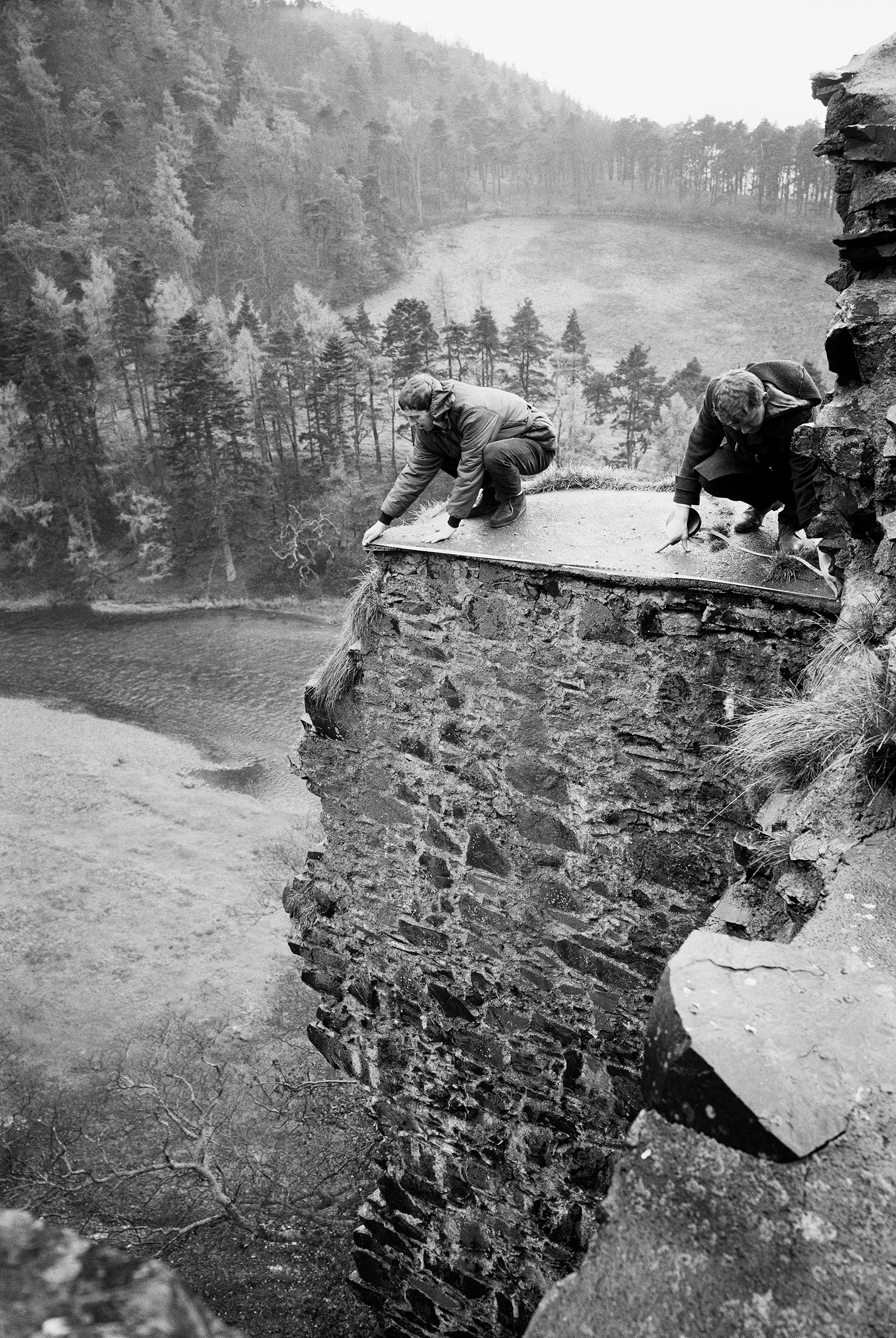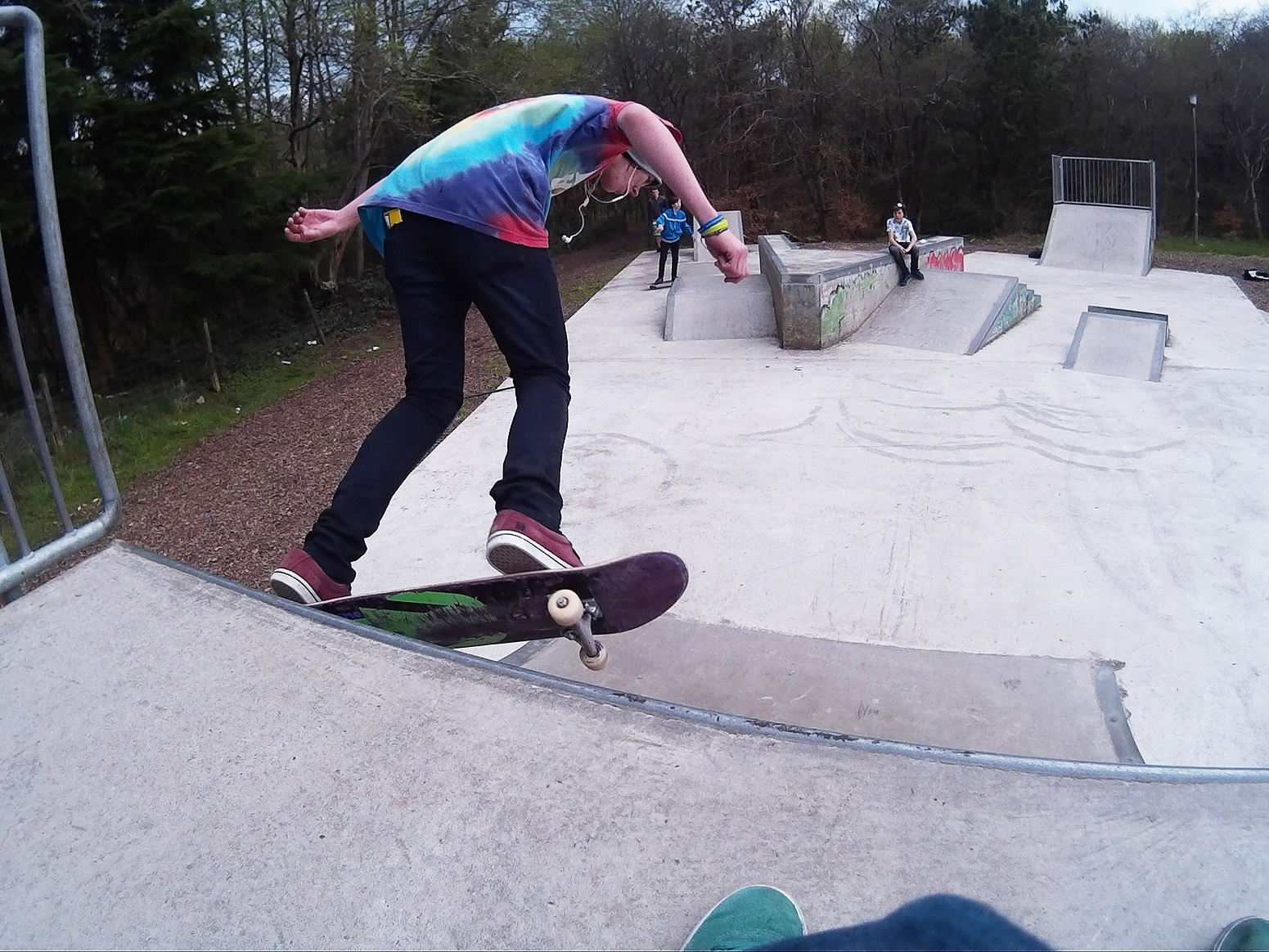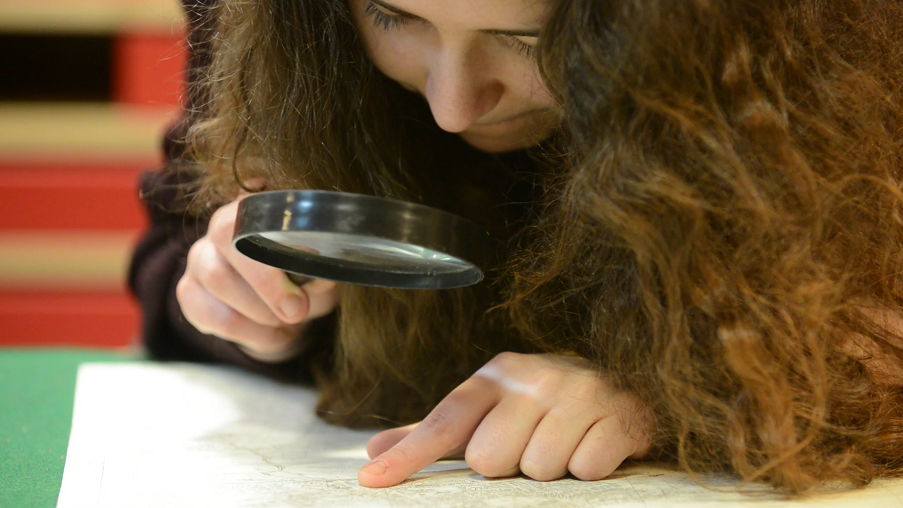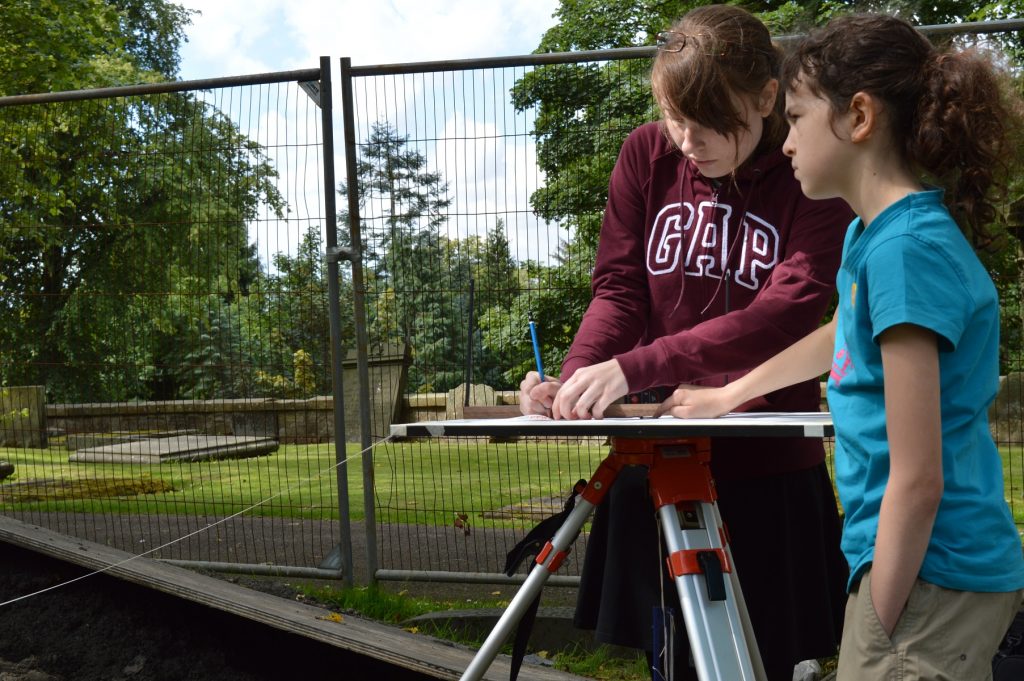When you think about how our heritage was recorded in the past you may imagine scholarly men, and sometimes women, in tweed, roaming the land pipe in hand (it kept the midges away), surveying and recording.
Decisions on what to document lay solely with them. They were experts in their field, to repeat a well-known joke, but who are the experts today?

Survey team in action at Neidpath Castle; left, Sam Scott, right, Douglas Fleming: ‘Health and safety was important in the 1970s, and Wallabee shoes are very non-slip.’
If you know somewhere, you can be an expert
Scotland’s Urban Past (SUP) is a five-year community engagement project about the heritage of the nation’s towns and cities. We want you to lead the way, tell us about the urban places and communities that matter to you and share your expertise in the National Record of the Historic Environment. Urban for us means all towns and cities over 3,000 people.
The National Record of the Historic Environment is a public record, kept forever for the nation. What heritage means to you can be read by future generations, who can learn from your contributions. Perhaps you have a shoebox of old memories of your area under your bed?
Heritage of the future
We’re also looking for future heritage – technology moves so quickly now that what’s here today could be gone tomorrow. When we’re all flying about on our hover boards, we’ll be glad that the users of the Vennie Youth Club in Livingston wanted to record their skatepark for inclusion on to the National Record of the Historic Environment.

Skaters at the Vennie
The Vennie Club members came to SUP and asked if they could make a film about their park, and carry out a measured survey. The club’s members had campaigned and raised funds for the skatepark to be built. It’s the first site of its type to be added to the record, and the new architectural term, Skatepark, was added to our list of building types.
What if I can’t find my interesting place on the national record?
You can now suggest a new site to be entered into the record. Suggestions already made include a pedestrian underpass in a 1960s social housing scheme, added because there are a lot of local tales associated with it, and a public totem pole. These types of additions challenge attitudes about what heritage is.
Can I upload pictures?
Images can also be added to existing records. Photographs are invaluable to view the current condition of sites, and also to fill gaps where a site may not be photographed at all. Images don’t even have to be photographs – old hotel and restaurant menus, tickets for concerts, and sporting events can be scanned and uploaded. These are fascinating to look at, and can bring forward memories. Have a look under your bed for shoe boxes full of old tickets.

What if I have memories or information?
Information or reminiscences can be added to site records, like the local stories surrounding the pedestrian underpass.
Heritage, like beauty, is in the eye of the beholder. Become an Urban Detective with Scotland’s Urban past and share your expertise about your area.
If you contribute your information, memories and images, they can be discovered through a national collection. All your personal contributions will be kept forever for future generations, and the National Record of the Historic environment can become your ‘shoebox under the bed’.

